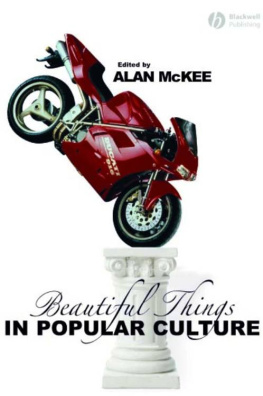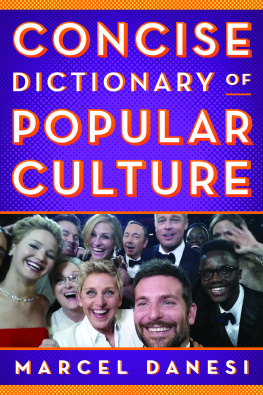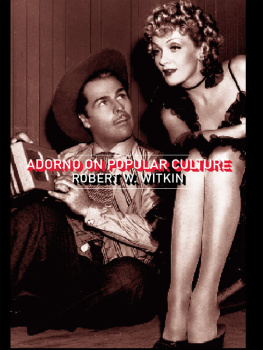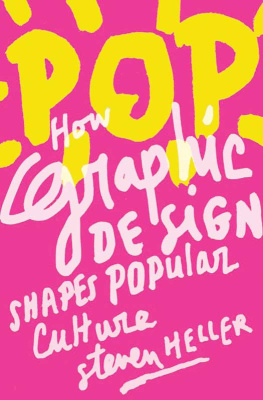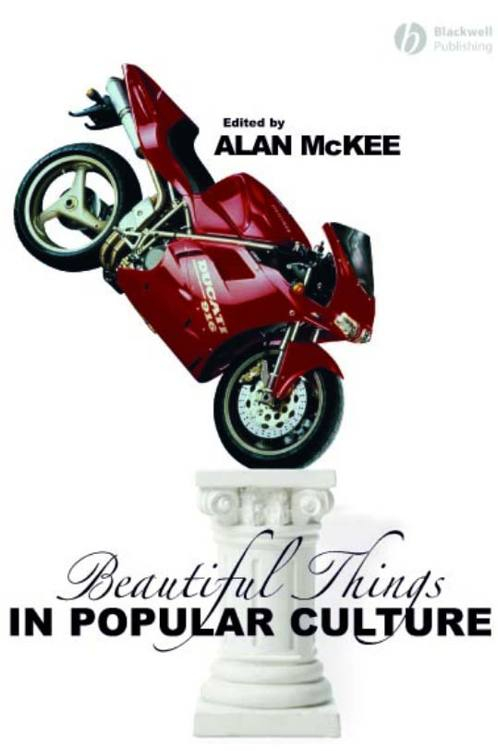Beautiful Things i n Popular Cultur e
edited by Alan McKe e

Blackwell Publishing 2007 by Blackwell Publishing Ltd except for editorial material and organization 2007 by Alan McKee
BLACKWELL PUBLISHING 350 Main Street, Malden, MA 02148-5020, USA 9600 Garsington Road, Oxford OX4 2DQ, UK 550 Swanston Street, Carlton, Victoria 3053, Australia
The right of Alan McKee to be identified as the Author of the Editorial Material in this Work has been asserted in accordance with the UK Copyright, Designs, and Patents Act 1988.
All rights reserved. No part of this publication may be reproduced, stored in a retrieval system, or transmitted, in any form or by any means, electronic, mechanical, photocopying, recording or otherwise, except as permitted by the UK Copyright, Designs, and Patents Act 1988, without the prior permission of the publisher.
First published 2007 by Blackwell Publishing Ltd
1 2007
Library of Congress Cataloging-in-Publication Data
Beautiful things in popular culture / edited by Alan McKee.
p. cm . ISBN-13: 978-1-4051-3190-2 (hardback : alk. paper ) ISBN-10: 1-4051-3190-X (hardback : alk. paper ) ISBN-13: 978-1-4051-3191-9 (pbk. : alk. paper ) ISBN-10: 1-4051-3191-8 (pbk. : alk. paper )
Popular culture. 2. Aesthetics, Modern20th century. I. McKee, Alan.
CB430.B387 200 .0973dc2 200600171
A catalogue record for this title is available from the British Library.
Set in 10 on 13 pt Galliard by SNP Best-set Typesetter Ltd, Hong Kong Printed and bound in Singapore by Markono Print Media Pte Ltd
The publishers policy is to use permanent paper from mills that operate a sustainable forestry policy, and which has been manufactured from pulp processed using acid-free and elementary chlorine-free practices. Furthermore, the publisher ensures that the text paper and cover board used have met acceptable environmental accreditation standards.
For further information on Blackwell Publishing, visit our website: www.blackwellpublishing.com
List of Figure s
9.1 Utopia comes in yellow as well (front view) 126
9.2 Utopia comes in yellow as well (rear view) 127
9.3 Utopia comes in yellow as well (side view) 128
12.1 Cover, Q magazine, June 2002 185
Notes on Contributor s
John Banks has been an avid gamer since playing the arcade game Defender at the local corner shop as a teen in the early 1980s. His favorite videogames include the Grand Theft Auto series and Halo 1 & 2. Recently, he has been spending far too much time playing Blizzards World of Warcraft . He works with the games development company Auran, as well as being a researcher with the Australasian Cooperative Research Centre for Interaction Design. He has researched the relationships among com puter games, their audiences, and game development companies, among other things.
Marc Brennan s first and only encounter with Kylie Minogue was a personal appearance by the pop star at the Perth nightclub Pinocchios in 1987. An arch Indie boy at the time, his intention was to heckle the diminutive starlet an aim that was thwarted by his two autograph-hunting friends. Age has weathered such prejudiced tendencies, as has a greater appreciation of the art of the pop song encouraged by years of viewing such Australian televisual staples as Countdown, Rage , and Video Hits (but not So Fresh ). He now finds pleasure in cutting the rug to remixes of pop songs, drinking beer at live performances, and busting some Janet Jackson moves for his students. He will, one day, manage a boy band.
Will Brooker grew up on Denny ONeils Batman in the 1970s, Frank Millers Batman in the 1980s and Grant Morrisons Batman in the 1990s. While researching his PhD thesis, a cultural history of Batmans fi rst 60 years, he spent two weeks in DC Comics NYU offices and interviewed Denny ONeil about Miller and Morrison. On the publication of his book
Notes on Contributors
Batman Unmasked in 2000, he was interviewed by Gloria Hunniford on a sofa with the 1960s Caped Crusader, Adam West. Brooker knows seven working defenses. Three of them disarm with minimal contact. Three of them kill. The other... hurts.
Simon Frith is old enough to be described these days as a pioneer of popular music studies his first academic book, The Sociology of Rock , appeared in 1978. In university terms, his disciplinary expertise has always been a little unclear he has been a lecturer in sociology, a profes sor in departments of both English Studies and Film and Media, and now holds the Tovey Chair of Music at the University of Edinburgh. His first published reviews (of records by Gene Vincent and the Small Faces) appeared in Rolling Stone in 1970 and in the 1980s he became rock critic of both the London Sunday Times and the Observer . For much of this period he reviewed singles, and his Thesis on Disco (an homage to Karl Marxs Thesis on Feuerbach) appeared in Time Out on the occa sion of the UK release of Saturday Night Fever . He has been the chair of the judges of the Mercury Music Prize since its inauguration in 1992 and is the author of Performing Rites: On the Value of Popular Music . He may not know much about disco, but has every confidence in his expertise in what is meant by the best.
Claire Gould would like to think she has the best-dressed feet in the world. A former university lecturer and newspaper journalist, she crossed the floor to online media when they adopted the more casual combat trousers and trainers dress code. She currently edits the Daily Telegraph online (www.dailytelegraph.com.au) in Sydney, has broadened her foot wear horizons and wears thongs (flip flops) in summer. She stares at her feet for at least three hours a day.
Sara Gwenllian Jones has researched and written extensively on Xena: Warrior Princess in particular, and cult television generally, in her books Cult Television and Worlds Apart: Essays on Cult Television (edited with Roberta Pearson). She has also published on the topic in journals including Continuum, Screen , the Journal of Television and New Media , and in book collections including Mark Jancovich and James Lyons Quality Popular Television . Her next book will be a cultural history of pirates.
John Hartley lived in Wales for 19 years and fell for Humphrey Jennings while taking a film production course at Chapter Film Workshop in
Notes on Contributors
Cardiff in 1979. His interest in propaganda stems from having made an agit-prop film about working conditions for cinema projectionists. Called Were Dying to Please You , it played at art houses and film festivals and led to the replacement of Chapter Cinemas carbon arc lamps with xenon bulbs. Hartley visited Cwmgiedd with a view to making a film about The Silent Village , but emigrated to Australia instead. He went on to write about Jennings and propaganda more generally in several books, including Tele-ology , The Politics of Pictures , Uses of Television (all Rout-ledge) and A Short History of Cultural Studies (Sage).

